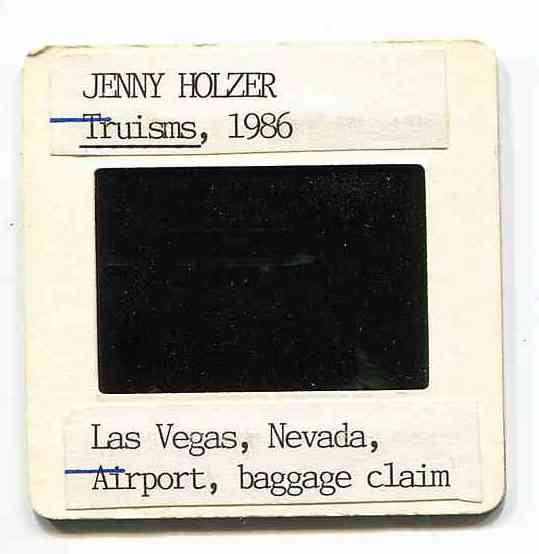INVENTORY GUIDELINES
After Craig Owens’s death, his slide collection was donated by his partner, Scott Bryson, to James Meyer, art historian and current Curator of Modern Art at the National Art Gallery in Washington DC, in whose care it remains. The digitization of the collection was made possible thanks to the research program, “Art, Theory and Critical Pedagogy: The Legacy of Craig Owens,” funded by the École Supérieure d’Art et Design •Grenoble •Valence, and the French Ministry of Cultural Affairs.
The collection comprises six hundred and thirty-five slides (S), stored in four boxes (B). For the documentation process, the slides were numbered as they appeared in the boxes. Each slide was digitized, first the image, then the frame supporting the image. Twelve slides were displayed on a contact sheet in the order they were stored, with two index plates: one for the front of the frame (F), in recto, one for the back of the frame (B), in verso. As a result, the index (I) is made up of one hundred and six contact sheets.
For this inventory, the names of the artists whose works are reproduced in the collection are listed alphabetically. Each entry corresponds to a single slide with a description on three lines:
—1. Location in the Collection: S (Slide number), B (Box number), I (Index plates)
—2. Information on Front of frame (F)
—3. Information on Back of frame (B)
The following abbreviations relate to how the information appears on the frame of each slide:
—p: printed on frame
—t: typed and pasted on frame
—h: handwritten directly on frame
—/: no information on frame
In addition, supplementary information is provided within square brackets when it is not given on the frame of the slide and when it is available. This includes:
—the first and last names of the artist, the title and date of the work reproduced
—the slide is of exhibited artwork(s), the date(s) and location of the exhibition
—the slide is a reproduction of the detail of an artwork
—the slide has been reproduced in a published essay written by Craig Owens
—the reproduction has been authorized courtesy of an art gallery
—the slide is a duplicate (Dup. Sx) of another slide of the collection
—an internet link where can be found a reproduction of the work as it appears on the slide, or when it is not possible a view of the work (it is then presented as “view” and not “reproduction”), or a book reference where the image on the slide can be found.

For example, the first slide of the first box (here above) appears as follows:
Holzer, Jenny
S1 (B1 I1–2)
F: Jenny Holzer, Truisms, 1986, Las Vegas, Nevada, Airport, baggage claim (t)
B: Kodak–Color Slide Duplicate (t)
[Jenny Holzer, “Money Creates Taste,” Truisms, 1977–1979, Protect Me From What I Want, outdoor installation, electronic sign, baggage carousel, McCarran International airport, September 12–28, 1986, Nevada Institute for Contemporary Art, Las Vegas.
A reproduction available at http://phlox-films.de/en/portfolio/about-jenny-holzer]
The first three lines of the entry (below the artist’s name) read:
—Slide 1 (Box 1, Index 1–2)
—Front of frame (typed and pasted information)
—Back of frame (typed and pasted information)
The following additional information is also provided:
—the first and last name of the artist, the title of the work
—the date and location of the exhibition reproduced on this slide
—an internet link where can be found a reproduction of the work as it appears on the slide
INVENTORY